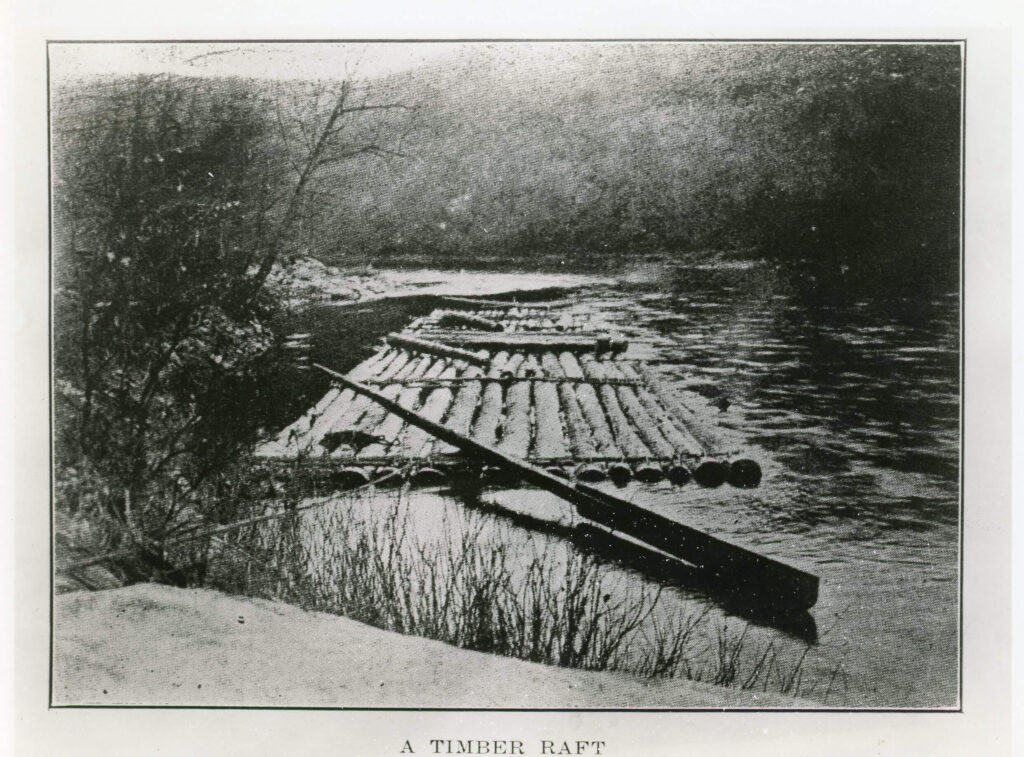Heritage / Our Roots
Heritage / Our Roots
Rivers became the highways of the early American frontier, transforming transportation, trade, and settlement patterns. In Pennsylvania, these natural waterways were crucial to the development of the timber trade, facilitating the growth of new towns and fostering economic expansion.
Pennsylvania’s major rivers and their tributaries were instrumental in the burgeoning timber trade. The North and West Branches of the Susquehanna, the Allegheny, the Tioga, and the Cowanesque Rivers served as primary transportation routes for settlers and timber alike. These rivers were vital in moving logs from remote forests to mills and markets, supporting the nascent lumber industry.

To augment the natural waterways, artificial corridors like the West Branch Canal and the Bald Eagle Cross-Cut Canal were constructed. These canals played a significant role in the efficient transportation of timber, enabling the industry to penetrate deeper into the region’s forests. The establishment of sawmills along these waterways further accelerated the growth of the lumber industry, reaching areas that were previously inaccessible.
Splash dams were built to control and maintain water levels in tributaries, facilitating larger and more frequent log drives. These structures helped manage the flow of water, ensuring that logs could be transported efficiently downstream to mills and markets.
Log booms, acting like fences in the rivers, were constructed to hold back logs while allowing water to pass through. The Susquehanna Boom, for example, played a crucial role in making Williamsport the “Lumber Capital of the World” for decades. This innovative system allowed for the organized collection and processing of vast quantities of timber, supporting the region’s economic growth.
Various techniques were employed to transport timber. Spar timber, square timbering, dimension lumber, and timber rafting were all key components of the early lumber industry. These methods allowed timber to reach national markets along the east coast and as far as New Orleans.
Spar timber, used extensively in shipbuilding, supported maritime travel and trade. Pennsylvania’s spar timber was highly sought after for its strength and durability, essential qualities for masts and other structural components of ships. This demand linked Pennsylvania’s forests to global trade networks, enhancing the state’s economic influence.
Timber rafting became a common sight during peak log drive and rafting seasons, primarily in the spring when water levels rose due to rain and snowmelt. On any given day during these peak times, areas within the Lumber Heritage Region could witness as many as 1,000 rafts and arks floating by, laden with timber destined for distant markets.
The logging and lumber industry also fostered unique local customs and traditions. Communities developed around the industry, and the labor and lifestyle of lumberjacks became ingrained in the regional culture. Pennsylvania’s timber supported not only maritime industries but also railroading and coal mining, underpinning the broader industrialization of the United States.
The rivers of Pennsylvania were not just waterways; they were the arteries through which the lifeblood of the lumber industry flowed. From the natural corridors of the Susquehanna and Allegheny to the man-made canals and splash dams, these water routes were crucial in transforming Pennsylvania into a powerhouse of timber production. The innovations and traditions that arose from this era continue to influence the region’s culture and economy today.
By understanding the historical significance of these waterways and the timber industry, we can appreciate the enduring legacy of Pennsylvania’s forests and the communities they supported. The synergy between the natural landscape and human ingenuity is a testament to the resilience and adaptability of the region’s early settlers and industry pioneers.
Heritage
During the era of the Great Depression, many young men left school to help support their families. Traditional educational paths were disrupted for countless individuals. The Civilian Conservation Corp (CCC), launched in 1933 as part of President Franklin D. Roosevelt’s New Deal,... Read more
© 2025 Lumber Heritage Region LLC | Website Designed & Hosted by Pixel & Hammer